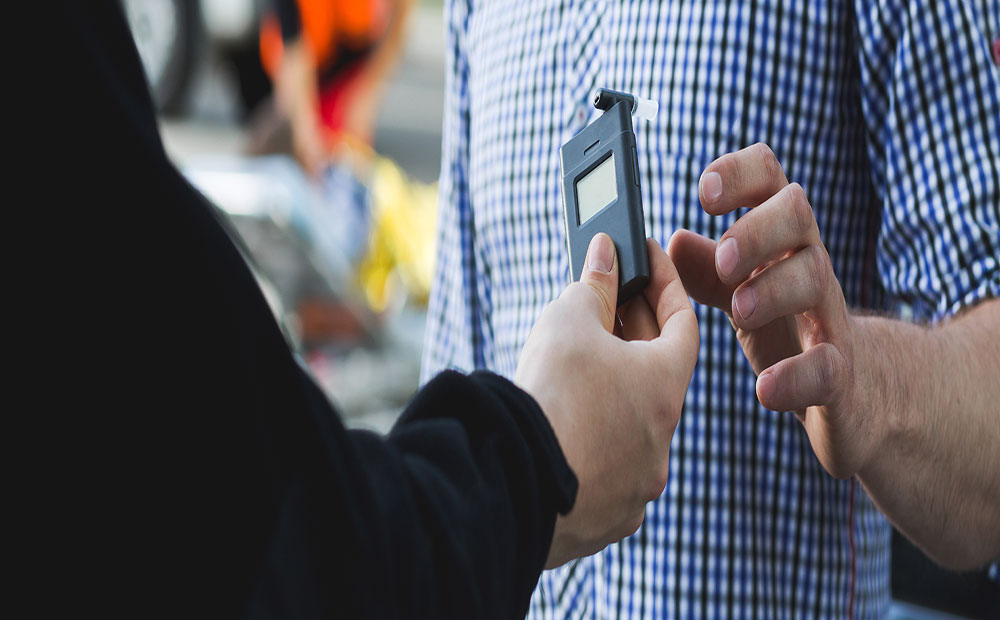A man driving under the influence of alcohol was more threatening than Michael Myers this past Halloween after causing property damage and injuring multiple people in Visalia, CA. In addition to running into a motorcyclist, the man made five vehicles crash at a major intersection. The suspect is facing charges for driving under the influence (DUI) and leaving the scene of an accident.
That same evening, a Texas resident crashed a motorized scooter outside a restaurant in Austin. Police officers administered a breath sobriety test and determined the person’s blood alcohol concentration (BAC) level was above the legal limit. In a similar incident in September, Los Angeles Police Department officers arrested the first person for operating an electric scooter while under the influence.
Numerous government and law enforcement agencies have stressed the increased safety risks during the holidays due to drunk driving. According to the U.S. Department of Transportation (DOT), an average of 300 people died in drunk driving-related car crashes between Christmas and New Year’s Eve from 2012 to 2016. Nearly 800 people were killed in DUI motor accidents in December of 2016.
The National Highway Traffic Safety Administration (NHTSA), a subsidiary of DOT, reported that despite declines in alcohol-impaired driving fatalities from 2001 to 2011, the rate increased through 2016. Approximately 28 percent of vehicular deaths in the U.S. in 2016 were due to alcohol-related motor vehicle accidents. However, alcohol-impaired vehicular deaths slightly decreased the following year, a subsequent publication stated.
Legislative and Preventative Measures
The National Institutes of Health reported that alcohol-related incidents accounted for approximately 60 percent of vehicular fatalities in the mid-1970s. While state laws that prohibit drunk driving date back to 1906, government officials didn’t officially establish minimum legal drinking ages (MLDA) limits until after Prohibition.
The establishment of organizations such as Mothers Against Drunk Driving (MADD) prompted lawmakers to enact more effective legislation concerning drunk driving. In 1984, Congress passed legislation declaring that states must raise the MLDA to 21 or face reductions to federal funding for highway construction projects. Multiple studies confirm that the federal MLDA has decreased the rate of underage DUI traffic incidents. BAC levels were initially set by states, most commonly ranging between 0.08 and 0.15 percent. However, Congress set the federal legal BAC limit to operate a vehicle at 0.08 percent in 2000. Commercial truck drivers have a different requirement; they must not drive with a BAC above 0.04 percent. Beginning in the 1990s, state government officials began passing ‘zero tolerance’ laws, which makes it illegal for persons under 21 years of age to drive with a BAC above 0.2 percent.
In 1988, Congress approached ‘open container’ laws in a similar manner to MLDA limits — it would decrease highway construction funding for states that did not pass legislation banning the consumption of alcohol while driving.
In 2016, the U.S. Supreme Court heard a case entitled ‘Birchfield vs. North Dakota.’ The case concerned three individuals who were arrested for drunk driving. The defendants argued that their Fourth Amendment rights had been violated when they were arrested for not submitting to an blood alcohol test. The Supreme Court reached a compromise, ruling that breath sobriety and blood tests were admissible under the Fourth Amendment without the need of a search warrant. However, the court clarified that while people could be arrested for refusing to take a breath test, they cannot be arrested for refusing to take a blood test to determine BAC.
In 2013, the U.S. National Transit Safety Board recommended that states reduce legal BAC limits to 0.05 percent. Utah will become the first state to lower the legal BAC level, beginning on New Year’s Eve of 2018.
In addition to legislative measures, multiple organizations have coordinated efforts to reduce drunk driving rates.
Numerous schools in the country offer programs to educate adolescents on the dangers of alcohol abuse. For example, the Coalition for a Drug-Free Batesville provides local high schools with alcohol education courses. Many colleges also have student counseling services and can refer students struggling with alcohol abuse to community Alcoholics Anonymous meetings.
MADD officials support in-car breath testing machines and ignition interlock devices (IID). The organization released a 2017 report that examined the effects of IIDs from 2006 to 2016. Researchers found that IIDs prevented approximately 350,000 drunk driving incidents from December 2015 to December 2016.
A group of Taiwan-based researchers examined the effectiveness of NHTSA regulations in the U.S. Their 2013 study concluded that regions with low-fatality rates would benefit from policies that address the population’s attitudes toward alcohol consumption while areas with high-fatality rates would benefit from regulations following incidents.
Still, law officials recommend that not drinking and driving is the safest thing a person can do. To promote safe driving behavior, the NHTSA issued a SafeRide mobile app.
Repercussions of Alcohol Abuse and Forms of Treatment
According to the U.S. Federal Bureau of Investigation’s Uniform Crime Reporting Program, nearly 1,018,000 DUI arrests occurred across the country in 2016.
A DUI can cause drivers to have their license suspended or revoked and, in some states, the Department of Motor Vehicles (DMV) may require individuals to take courses to become eligible to reapply for a license. The California DMV has programs based on the level of the DUI offense; requirements may vary from attending drug and alcohol training and counseling courses, regular interviews and community service. In addition, offenders may face misdemeanor or felony charges.
Depending on the circumstances, court officials may order DUI offenders to participate in a drug and alcohol rehabilitation program or alcohol support groups.
















